Third Finger, Left Hand

Brief Synopsis
Cast & Crew
Robert Z. Leonard
Myrna Loy
Melvyn Douglas
Raymond Walburn
Lee Bowman
Bonita Granville
Film Details
Technical Specs

Synopsis
Margot Sherwood Merrick, the editor of a fashion magazine, has invented a fictitious husband, Tony Merrick, because she thinks that men see that women in business as fair game unless they are wearing a ring on the third finger of their left hand. Margot's ruse backfires, however, when she meets Jeff Thompson, an opinionated artist with a disdain for New York, who falls in love with her. Upon discovering Margot's deception, an angry Jeff decides to get even by pretending to be her estranged Tony Merrick. After Jeff, as Tony, moves into Margot's home with her sister Vicky and father, an exasperated Margot asks Philip Booth, the magazine's attorney who is in love with her, for advice. Philip convinces Jeff that he must marry and then divorce Margot so that she will be free to marry Philip. Jeff and Margot travel to Niagara Falls for the wedding, where they meet some old friends from Jeff's home town in Ohio. Deciding to even the score, Margot pretends to be Jeff's crude bride from Brooklyn. Margot then returns to New York, planning to fly to Reno to file a divorce. Her old friend August Winkel, however, a photographer for the magazine, realizes that she is in love with Jeff and convinces her to accompany him on the train home to Ohio so that they can work out a property settlement before the divorce. Jeff, Margot and Philip board the train to complete the agreement, but the next morning when the train stops at Jeff's home town, Jeff and Margot leave as husband and wife, much to Philip's dismay.

Director

Robert Z. Leonard
Cast

Myrna Loy

Melvyn Douglas

Raymond Walburn
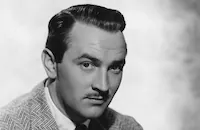
Lee Bowman

Bonita Granville

Felix Bressart
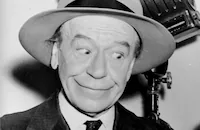
Donald Meek

Ann Morriss
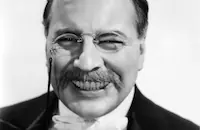
Sidney Blackmer
Ernest Whitman

Halliwell Hobbes
Edna Holland
Jean Fenwick
William Halligan

Marjorie Gateson
Howard Lang
Florence Shirley

Olive Blakeney

Jeff Corey

Greta Granstedt
Mira Mckinney
Marvin Stephens
Harry Tyler
Dick Paxton
Milton Kibbee
Ray Cooke
Tim Ryan
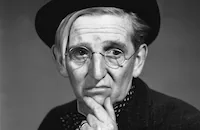
Jimmy Conlin
Jane Goude
Milton Parsons

Joe Yule
Philip Sleeman

May Mcavoy
Forbes Murray
Lloyd Whitlock
Jack Mulhall
Andrew Tombes
Grace Hayle
Frank Mcglynn
Rita Quigley
Frederick Burton
Leila Mcintyre
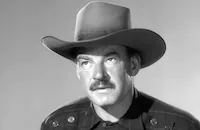
Ray Teal
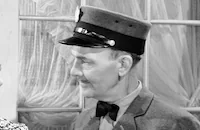
John Butler
Ken Christy
Ed Cecil
Ann Marsters
Barbara Bedford
Christine Teague
Dorothy Vernon
Alice Keating
Art Belasco
Frank O'connor
John Webb Dillon
Ernie Alexander
Sid D'albrook
Art Berry Sr.
Maurice Costello
Dick Rush
Cyril Ring
John Ince
Joe Whitehead
Helen Dickson
Gertrude Simpson
Walter Soderling
Crew
Leo Arnaud
Earl Brent
John W. Considine Jr.
George Folsey
Cedric Gibbons
Red Golden
Paul Groesse
Lionel Houser
Robert Z. Leonard
Clinton Morse
Sergei Petschnikoff
Douglas Shearer
David Snell
David Snell
Dolly Tree
Elmo Vernon
Edwin B. Willis

Videos
Movie Clip


Trailer
Hosted Intro
Film Details
Technical Specs

Articles
Third Finger, Left Hand
With that kind of success, MGM was glad to keep on typecasting Loy as the onscreen Mrs. William Powell, and to leave the Career Woman roles to Rosalind Russell. Third Finger, Left Hand (1940) is one of Loy's rare forays into the boss-lady-tamed-by-love genre so popular in the late 1930's and 40's. Loy plays a fashion magazine editor (in tailored suits, of course) who invents an absentee husband to ward off amorous business associates and jealous wives. Enter charming artist Melvyn Douglas, who discovers Loy's ruse, calls her bluff, and sets off a chain of romantic screwball complications. In her autobiography, Loy noted that Third Finger, Left Hand was not her usual style, and credited Douglas for making it work. "In most of my pictures I complemented the male character, who usually carried the story. This often meant that my roles were subordinate, but that's the way I wanted it...Melvyn Douglas helped me through that one. I adored him."
Third Finger, Left Hand was the first time Loy and Douglas had worked together, but they were both active in liberal politics, and were good friends. In her autobiography, Loy recalled that it was during the making of this film that Douglas and his wife, Helen Gahagan Douglas, along with several others in Hollywood, began to be smeared by the label of "Communist" by right-wing politicians. Douglas had been appointed a lieutenant colonel in the California National Guard, and "certain factions of the American Legion" objected, because the Douglases, like many liberals, had contributed to the Loyalist cause in the Spanish Civil War. Helen Gahagan Douglas would later be elected to Congress, and be defeated by Richard Nixon when she ran for the Senate in 1950, at the height of the Communist witch hunts. "I knew Mel and Helen very well in the old days, and supported her later when she opposed Nixon....We all fought the good fight together," Loy writes. Douglas and Loy would co-star again in Mr. Blandings Builds His Dream House (1948).
Loy was also fighting more personal battles during the making of Third Finger, Left Hand. Her marriage to producer Arthur Hornblow was rocky, and she would leave him shortly after the film opened. They divorced the following year. The movies' perfect wife married and divorced four times in real life, but there were no scandals surrounding the breakups. Loy managed the ups and downs of her private life with her characteristic dignity, tact and grace.
Reviews for Third Finger, Left Hand ranged from negative ("forced and artificial") to lukewarm ("diverting entertainment"). It appeared that neither audiences nor critics wanted to see Loy as a career woman, even if she did get her man at the fadeout. After this film, Loy went back to her favorite movie husband, William Powell, for two more films, then devoted herself to war work. It was only after the war that she had the opportunity to play a perfect wife with depth and substance, as well as charm and sophistication. As the sympathetic spouse of a returning soldier in The Best Years of Our Lives, (1946) Loy gave one of the best performances of her career.
Director: Robert Z. Leonard
Producer: John W. Considine, Jr.
Screenplay: Lionel Houser
Cinematography: George J. Folsey
Editor: Elmo Veron
Art Direction: Cedric Gibbons, Paul Groesse
Music: David Snell
Principal Cast: Myrna Loy (Margot Sherwood Merrick), Melvyn Douglas (Jeff Thompson), Lee Bowman (Philip Booth), Bonita Granville (Vicky Sherwood), Raymond Walburn (Mark Sherwood), Felix Bressart (August Winkel), Donald Meek (Mr. Flandrin).
BW-97m. Closed captioning.
by Margarita Landazuri

Third Finger, Left Hand
Quotes
Trivia
Notes
According to letters contained in the MPAA/PCA files at the AMPAS Library, Joseph I. Breen, director of the PCA, instructed M-G-M head Louis B. Mayer to delete several gags that suggested that "Margot" might be pregnant. Breen emphasized that illegitimacy could not serve as a basis for comedy. In 1941, the Lux Radio Theatre presented a radio version of this story starring Martha Scott and Douglas Fairbanks, Jr.
















